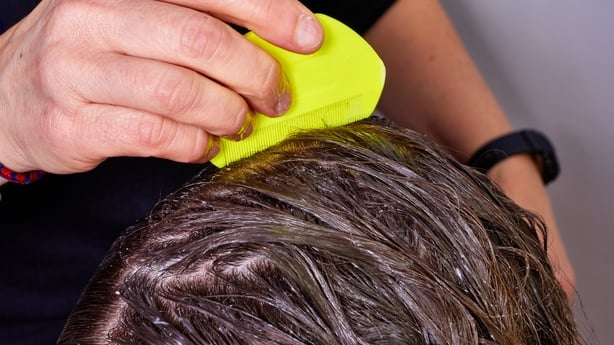They're headwreckers in every way, and lice can be a difficult thing to avoid once kids hit the classrooms once again. Andrew Hennessy of Head Lice Experts joins The Ray D'Arcy Show to share his tips for banishing the pesky parasites as school starts back up. Listen back above.
Lice have been around for over 100,000 years, by some estimations, and have likely plagued people ever since, feeding off the proteins in human blood. Hennessy said that a fully grown female louse, which lays the eggs parents try so hard to remove, typically measures the same size as a sesame seed.
However, contrary to popular belief, lice don't fly or jump from head to head. Instead, it's more of a "contact sport", Hennessy said.

"It's head to head contact or swapping hairbrushes, if there's some hair left in it with some on it. It's transfer, is what causes them."
Once away from a head and the blood supply it feeds on, a louse will live up to approximately 48 hours, such as in a pillow, on a hat or on a hairbrush. Despite this, there's still stigma around head lice and catching them.
"Everyone thought after Covid, and the lockdown, we'd all be eliminating everything from weight loss to head lice, but it's not. It's all still there. Nothing got rid of them. We wouldn't be talking if somebody had a product that could do it for us.
"Extraction, either professional or at home by the parent or guardian, is the only way, getting them out is the only way to deal with them."
Hennessy said that while there are products on the market to help slow down the spread of head lice, combing and extraction is still the key method for eradicating them completely.

If parents get a message from their child's school alerting them to a case of head lice in the school, Hennessy said the first thing they should do is have a good look at their child's hair. "If head lice are present, generally you'll see it straight away. There'll be evidence of eggs or crawlers." From there, you can decide on a treatment.
He added that screening for head lice twice in the week a school contacts you about them is recommended to be extra thorough.
Hennessy noted that missing eggs is common because when they're first laid, they're a "clear sack of fluid" which take three to four days to become visible to the eye.
He said that overcoming stigma around head lice is one way to making treating them more effective, as other European countries have become better at screening widely throughout the year.
Head lice can become a medical problem when infection in the scalp develops, Hennessy said, if bacteria enters the bites left by the lice. "If you can imagine, 50 to 100 crawlers would be the norm", he said. "That's 50, for want of a better description, midget bites or parasite bites.
"It drags you down, and that's where the term 'feeling lousy' comes from."

